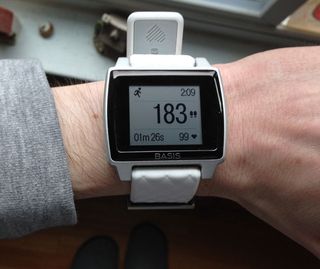
Fitness trackers that only count steps are so last year.
The newest fitness trackers are going beyond just a simple accelerometer to carry a host of new sensors, from devices that measure the electrical properties of your skin to optical sensors that can measure your heartbeat.
But do these sensors really provide a better picture of health?
The new devices do provide an incremental improvement over the earlier ones, but the real breakthroughs are still a few years off, said Jason Heikenfeld, an electrical engineer and the director of the Novel Devices Laboratory at the University of Cincinnati. [The Best Fitness Tracker Bands]
Most of the new devices still don't go beyond providing raw data for users to interpret, and are still far from making health predictions and prescriptions, said Dan Ledger, who researches wearables and health technologies at Endeavour Partners, a digital technology consulting company in Massachusetts.
New devices
The first generations of fitness trackers relied mainly on accelerometers, which measure movement. That provided an estimate of a person's step count, activity levels and a very rough picture of sleep, but not much else.
Sign up for the Live Science daily newsletter now
Get the world’s most fascinating discoveries delivered straight to your inbox.
The new devices, however, are increasingly packed with much more sophisticated sensors. Products such as the Jawbone UP3, Basis Peak and the Microsoft Band have sensors that measure a person's galvanic skin response, which is a measure of how easily an electrical current can travel over the skin, and changes when someone sweats. These sweat levels can in theory be tied to stress levels, Ledger said.
The Microsoft Band and the Basis Peak, along with several other new trackers, such as the Mio Fuse, also measure a person's heart rate by using light-based sensors, which shine light through the skin and measure how those light waves are reflected back. Earlier generations of fitness trackers could be paired with a chest-strap heart rate monitor, which wirelessly communicated with the tracker.
The new devices can not only tell people their heart rate, but also may reveal their heart rate variability, which is also a measure of stress. Optical sensors can also reveal how much oxygen the blood is carrying.
And several devices are using other sensors, such as temperature trackers to measure body and ambient air temperatures, UV light detectors to measure sunlight exposures and even microphones to sense when someone coughs.
Limited insight
In theory, these sensors could reveal many new insights about people's health, from their stress levels to their baseline metabolic rate. Elite athletes are already using such devices and finding that the gadgets do a good job of providing workout stats such as post-workout recovery times, Ledger said.
But for the average Joe, "They just want to understand something about their baseline fitness level — things like stress, sleep, nutrition, hydration, emotion," Ledger told Live Science. "We're not close to being able to do that."
Each person's physiology is so different that it's just difficult to devise ways to reliably interpret the data.
"Being able to look at data from 100 people and reliably detect when all 100 people are experiencing stress — we're really far away from that," Ledger said.
And if the companies claim their devices can make predictions and it turns out that those predictions are unreliable, they risk alienating their customers or even running afoul of the Food and Drug Administration, which regulates health products, Ledger said.
As a result, the newer fitness trackers are a lot more fashionable, but under the hood, aren't all that different from the old ones, and it's still hard to find meaning in the numbers. "Most of the devices out there are reading a metric from our body and providing it to you as is," Ledger said.
There are signs that fitness trackers are trying to do better at data analysis. Companies like LifeQ and Firstbeat are working on algorithms to analyze biometric data, Ledger said. But getting to truly useful information is still a ways off, he said.
Future tech
Sensors will likely become more sophisticated in the coming years. The current batch of sensors don't differ much from those worn by astronauts on the Apollo space missions, Heikenfeld told Live Science.
But newer sensors could get at information that is simply too difficult to infer with older sensors. For instance, researchers are developing sensors that detect chemical markers of health or disease in sweat. These patches either use tiny needles to draw fluid from the upper layers of the skin, or use a small electrical charge to trigger the skin to generate sweat and then test the biological chemicals in that sweat for signs of disease, Heikenfeld said.
"You can start to think of all the sophisticated tests you do in a doctor's office or hospital, going around with you all day, out of sight, out of mind, in a small patch," Heikenfeld said.
Follow Tia Ghose on Twitterand Google+. Follow Live Science @livescience, Facebook & Google+. Originally published on Live Science.

Tia is the managing editor and was previously a senior writer for Live Science. Her work has appeared in Scientific American, Wired.com and other outlets. She holds a master's degree in bioengineering from the University of Washington, a graduate certificate in science writing from UC Santa Cruz and a bachelor's degree in mechanical engineering from the University of Texas at Austin. Tia was part of a team at the Milwaukee Journal Sentinel that published the Empty Cradles series on preterm births, which won multiple awards, including the 2012 Casey Medal for Meritorious Journalism.
